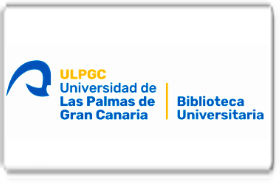Enfermedad renal poliquística autosómica dominante actualización diagnóstico y tratamiento
DOI:
https://doi.org/10.56048/MQR20225.8.1.2024.782-800Palabras clave:
Poliquistosis Renal; Diagnóstico; Tratamiento; GenéticaResumen
Introducción: la Enfermedad Renal Poliquística Autosómica Dominante (PQRAD) se destaca como una patología genética prevalente caracterizada por el desarrollo progresivo de quistes renales y hepáticos, conduciendo frecuentemente a la insuficiencia renal terminal. Las manifestaciones clínicas y los avances en los métodos diagnósticos y terapéuticos son dinámicos y multifacéticos, lo que subraya la necesidad de una revisión comprensiva y actualizada.
Objetivo: este trabajo aspira a consolidar y analizar los datos más recientes en diagnóstico y manejo de la PQRAD, brindando una síntesis actualizada para orientar la práctica clínica y la investigación futura.
Metodología: se llevó a cabo una revisión exhaustiva de la literatura, seleccionando estudios, artículos y guías clínicas publicadas en la última década. Los criterios de inclusión se basaron en la relevancia clínica, la calidad metodológica y la actualidad de los datos. Se excluyeron las publicaciones no peer-reviewed y aquellas que no aportaban información significativa a la temática central.
Resultados: los avances en la imagenología han potenciado la detección temprana y la evaluación precisa de la severidad de la enfermedad. La comprensión de la genética y la biología molecular de la PQRAD ha sido crucial para el desarrollo de terapias dirigidas. Los tratamientos actuales se enfocan no solo en retardar la progresión de la enfermedad renal, sino también en manejar las manifestaciones extrarrenales y las comorbilidades asociadas.
Conclusiones: esta patología requiere un enfoque multidisciplinario para su diagnóstico y tratamiento. Los avances en la investigación genómica y clínica continúan mejorando la calidad de vida de los pacientes afectados. Es imperativo que los profesionales de la salud estén actualizados respecto a los desarrollos recientes para optimizar el manejo clínico y explorar nuevas avenidas para la investigación y la intervención terapéutica.
Descargas
Métricas
Cited
DOI: 10.56048![]()
Citas
Alan, S. L., Shen, C., Landsittel, D. P., Grantham, J. J., Cook, L. T., Torres, V. E., ... & Consortium for Radiologic Imaging Studies of Polycystic Kidney Disease (CRISP. (2019). Long-term trajectory of kidney function in autosomal-dominant polycystic kidney disease. Kidney international, 95(5), 1253-1261.
Alan, S. L., Shen, C., Landsittel, D. P., Harris, P. C., Torres, V. E., Mrug, M., ... & Consortium for Radiologic Imaging Studies of Polycystic Kidney Disease (CRISP. (2018). Baseline total kidney volume and the rate of kidney growth are associated with chronic kidney disease progression in Autosomal Dominant Polycystic Kidney Disease. Kidney international, 93(3), 691-699.
Anjay Rastogi, Khalid Mohammed Ameen, Maha Al-Baghdadi, Kelly Shaffer, Niloofar Nobakht, Mohammad Kamgar & Edgar V Lerma (2019) Autosomal dominant polycystic kidney disease: updated perspectives, Therapeutics and Clinical Risk Management, 15:, 1041-1052, DOI: 10.2147/TCRM.S196244
Ars, E., Bernis, C., Fraga, G., Furlano, M., Martínez, V., Martins, J., ... & Torra, R. (2022). Documento de consenso de poliquistosis renal autosómica dominante del grupo de trabajo de enfermedades hereditarias de la Sociedad Española de Nefrología. Revisión 2020. nefrologia, 42(4), 367-389. https://www.revistanefrologia.com/es-documento-consenso-poliquistosis-renal-autosomica-articulo-S0211699521002010
Bellos, I. (2021). Safety profile of tolvaptan in the treatment of autosomal dominant polycystic kidney disease. Therapeutics and Clinical Risk Management, 649-656. https://www.tandfonline.com/doi/full/10.2147/TCRM.S286952
Chapman, A. B., Devuyst, O., Eckardt, K. U., Gansevoort, R. T., Harris, T., Horie, S., ... & Perrone, R. D. (2018). Tolvaptan in later-stage autosomal dominant polycystic kidney disease. New England Journal of Medicine, 379(10), 1008-1018.
Chapman, A. B., Rahbari-Oskoui, F. F., & Bennett, W. M. (2023). Autosomal dominant polycystic kidney disease (ADPKD): Treatment. In R. D. Perrone (Ed.), UpToDate. Retrieved October 23, 2023, from https://www.uptodate.com/contents/autosomal-dominant-polycystic-kidney-disease-adpkd-treatment
Chebib, F. T., & Torres, V. E. (2018). Recent advances in the management of autosomal dominant polycystic kidney disease. Clinical Journal of the American Society of Nephrology: CJASN, 13(11), 1765.
Chebib, F. T., & Torres, V. E. (2021). Assessing risk of rapid progression in autosomal dominant polycystic kidney disease and special considerations for disease-modifying therapy. American Journal of Kidney Diseases, 78(2), 282-292.
Chebib, F. T., Hogan, M. C., El-Zoghby, Z. M., Irazabal, M. V., Senum, S. R., Heyer, C. M., ... & Torres, V. E. (2017). Autosomal dominant polycystic kidney patients may be predisposed to various cardiomyopathies. Kidney International Reports, 2(5), 913-923.
Chebib, F. T., Torres, V. E., Hogan, M. C., Braun, W. E., & Tolvaptan Investigators. (2019). Tolvaptan in autosomal dominant polycystic kidney disease with polycystic liver disease: a subgroup analysis of the TEMPO 3: 4 trial. American Journal of Kidney Diseases, 73(6), 842-852.
Cornec-Le Gall, E., Alam, A., & Perrone, R. D. (2019). Autosomal dominant polycystic kidney disease. The Lancet, 393(10174), 919-935.
Cornec-Le Gall, E., Audrézet, M. P., Chen, J. M., Hourmant, M., Morin, M. P., Perrichot, R., ... & Ferec, C. (2017). Type of PKD1 mutation influences renal outcome in ADPKD. Journal of the American Society of Nephrology, 28(69), 69A.
Cornec-Le Gall, E., Torres, V. E., & Harris, P. C. (2018). Genetic complexity of autosomal dominant polycystic kidney and liver diseases. Journal of the American Society of Nephrology, 29(1), 13-23
Gansevoort, R. T., Arici, M., Benzing, T., Birn, H., Capasso, G., Covic, A., ... & Torres, V. E. (2019). Recommendations for the use of tolvaptan in autosomal dominant polycystic kidney disease: a position statement on behalf of the ERA-EDTA Working Groups on Inherited Kidney Disorders and European Renal Best Practice. Nephrology Dialysis Transplantation, 34(2), 223-233
Guatibonza, Y. P., Rodríguez, R. E., Córdoba, J. P., & Zarante, I. (2013). Actualidad de la enfermedad renal poliquística. Universitas Médica, 54(1), 53-68. file:///C:/Users/HP/Downloads/adminpujojs,+4-ENFERMEDAD+RENAL+AUTORES+VARIOS-U-MEDICA.pdf
Harris, P. C., & Torres, V. E. (2018). Polycystic kidney disease, autosomal dominant. https://europepmc.org/article/NBK/nbk1246
Higashihara, E., Torres, V. E., Chapman, A. B., Grantham, J. J., Bae, K. T., Watnick, T. J., ... & Ouyang, J. (2018). Tolvaptan in autosomal dominant polycystic kidney disease: three years' experience. Clinical Journal of the American Society of Nephrology, 13(11), 1691-1699.
Hogan, M. C., & Norby, S. M. (2019). Treatment of autosomal dominant polycystic kidney disease: recent advances and controversies. Annual Review of Physiology, 81, 323-338.
Hogan, M. C., Masyuk, T. V., Page, L. J., Kubly, V. J., Bergstralh, E. J., Li, X., ... & Torres, V. E. (2018). Randomized clinical trial of long-acting somatostatin for autosomal dominant polycystic kidney and liver disease. Journal of the American Society of Nephrology, 29(10), 2577-2589.
Irazabal, M. V., Rangel, L. J., Bergstralh, E. J., Osborn, S. L., Harmon, A. J., Sundsbak, J. L., ... & Torres, V. E. (2017). Imaging classification of autosomal dominant polycystic kidney disease: a simple model for selecting patients for clinical trials. Journal of the American Society of Nephrology, 28(1), 214-221.
Irazabal, M. V., Rangel, L. J., Bergstralh, E. J., Osborn, S. L., Harmon, A. J., Sundsbak, J. L., ... & CRISP Investigators. (2015). Imaging classification of autosomal dominant polycystic kidney disease: a simple model for selecting patients for clinical trials. Journal of the American Society of Nephrology: JASN, 26(1), 160. https://www.ncbi.nlm.nih.gov/pmc/articles/PMC4279733/
Ishimoto, Y., Inagi, R., Yoshihara, D., Kugita, M., Nagao, S., Shimizu, A., ... & Nangaku, M. (2017). Mitochondrial abnormality facilitates cyst formation in autosomal dominant polycystic kidney disease. Molecular and cellular biology, 37(24), e00337-17.
Lanktree, M. B., Haghighi, A., di Bari, I., Song, X., & Pei, Y. (2021). Insights into autosomal dominant polycystic kidney disease from genetic studies. Clinical Journal of the American Society of Nephrology: CJASN, 16(5), 790.
Lee J, Kim Y, Kim Y, et al. The natural course of autosomal dominant polycystic kidney disease in Korean patients. Kidney Res Clin Pract. 2019;38(1):68-75.
Lu, J., Xu, W., Gong, L., Xu, M., Tang, W., Jiang, W., ... & Qian, X. (2023). Efficacy and safety of tolvaptan versus placebo in the treatment of patients with autosomal dominant polycystic kidney disease: a meta-analysis. International Urology and Nephrology, 55(3), 631-640. https://link.springer.com/article/10.1007/s11255-022-03353-8
Meijer, E., Gansevoort, R. T., de Jong, P. E., & van der Wal, A. M. (2018). Tolvaptan in patients with autosomal dominant polycystic kidney disease: the Dutch Tolvaptan Early Intervention Study-design and baseline characteristics. BMC Nephrology, 19(1), 1-9.
Meijer, E., Visser, F. W., Van Aerts, R. M., Blijdorp, C. J., Casteleijn, N. F., D‘Agnolo, H. M., ... & DIPAK-1 Investigators. (2018). Effect of lanreotide on kidney function in patients with autosomal dominant polycystic kidney disease: the DIPAK 1 randomized clinical trial. Jama, 320(19), 2010-2019.
Montaña, A., Patiño, N., Larrate, C., Zambrano, F. A., Martínez, J., Lozano, H., & Lozano, E. (2018). Actualización en enfermedad renal poliquística. Revista de la Facultad de Medicina, 66(1), 107-116. http://www.scielo.org.co/scielo.php?pid=S0120-00112018000100107&script=sci_arttext
Müller, R. U., Messchendorp, A. L., Birn, H., Capasso, G., Cornec-Le Gall, E., Devuyst, O., ... & Gansevoort, R. T. (2022). An update on the use of tolvaptan for autosomal dominant polycystic kidney disease: consensus statement on behalf of the ERA Working Group on Inherited Kidney Disorders, the European Rare Kidney Disease Reference Network and Polycystic Kidney Disease International. Nephrology Dialysis Transplantation, 37(5), 825-839. https://academic.oup.com/ndt/article/37/5/825/6431643
Nobakht, N., Hanna, R. M., Al-Baghdadi, M., Ameen, K. M., Arman, F., Nobahkt, E., ... & Rastogi, A. (2020). Advances in autosomal dominant polycystic kidney disease: a clinical review. Kidney Medicine, 2(2), 196-208.
Nowak, K. L., You, Z., Gitomer, B., Brosnahan, G., Torres, V. E., Chapman, A. B., ... & Chonchol, M. (2018). Overweight and obesity are predictors of progression in early autosomal dominant polycystic kidney disease. Journal of the American Society of Nephrology: JASN, 29(2), 571.
Ong, A. C., Devuyst, O., Knebelmann, B., Walz, G., ERA-EDTA Working Group for Inherited Kidney Diseases. (2017). Autosomal dominant polycystic kidney disease: the changing face of clinical management. The Lancet, 385(9981), 1993-2002.
Perrone, R. D., Mouksassi, M. S., Romero, K., Czerwiec, F. S., Chapman, A. B., Gitomer, B. Y., ... & Marier, J. F. (2017). Total kidney volume is a prognostic biomarker of renal function decline and progression to end-stage renal disease in patients with autosomal dominant polycystic kidney disease. Kidney international reports, 2(3), 442-450.
Rastogi, A., Ameen, K. M., Al-Baghdadi, M., Shaffer, K., Nobakht, N., Kamgar, M., & Lerma, E. V. (2019). Autosomal dominant polycystic kidney disease: updated perspectives. Therapeutics and Clinical Risk Management, 1041-1052. https://www.tandfonline.com/doi/full/10.2147/TCRM.S196244
Reiterová, J., & Tesař, V. (2022). Autosomal dominant polycystic kidney disease: from pathophysiology of cystogenesis to advances in the treatment. International Journal of Molecular Sciences, 23(6), 3317. https://www.mdpi.com/1422-0067/23/6/3317
Sharma, K., Rupprecht, C., Caroli, A., Aparicio, M. C., Remuzzi, A., Baust, M., & Navab, N. (2017). Automatic segmentation of kidneys using deep learning for total kidney volume quantification in autosomal dominant polycystic kidney disease. Scientific reports, 7(1), 2049.
Suwabe, T., Shukoor, S., Chamberlain, A. M., Killian, J. M., King, B. F., Edwards, M., ... & Torres, V. E. (2020). Epidemiology of autosomal dominant polycystic kidney disease in Olmsted County. Clinical Journal of the American Society of Nephrology: CJASN, 15(1), 69. https://www.ncbi.nlm.nih.gov/pmc/articles/PMC6946081/
Tangri, N., Hougen, I., Alam, A., Perrone, R., McFarlane, P., & Pei, Y. (2017). Total kidney volume as a biomarker of disease progression in autosomal dominant polycystic kidney disease. Canadian journal of kidney health and disease, 4, 2054358117693355.
Torres, V. E., Chapman, A. B., Devuyst, O., Gansevoort, R. T., Grantham, J. J., Higashihara, E., ... & Perrone, R. D. (2018). Tolvaptan in patients with autosomal dominant polycystic kidney disease. New England Journal of Medicine, 377(20), 1930-1942.
Torres, V. E., Chapman, A. B., Devuyst, O., Gansevoort, R. T., Perrone, R. D., Koch, G., ... & Sergeyeva, O. (2017). Tolvaptan in later-stage autosomal dominant polycystic kidney disease. New England Journal of Medicine, 377(20), 1930-1942.
Torres, V. E., Chapman, A. B., Devuyst, O., Gansevoort, R. T., Perrone, R. D., Lee, J., ... & Sergeyeva, O. (2021). Multicenter study of long-term safety of tolvaptan in later-stage autosomal dominant polycystic kidney disease. Clinical Journal of the American Society of Nephrology: CJASN, 16(1), 48. https://www.ncbi.nlm.nih.gov/pmc/articles/PMC7792652/
Willey, C. J., Blais, J. D., Hall, A. K., Krasa, H. B., Makin, A. J., & Czerwiec, F. S. (2017). Prevalence of autosomal dominant polycystic kidney disease in the European Union. Nephrology Dialysis Transplantation, 32(8), 1356-1363.
Publicado
Cómo citar
Número
Sección
Categorías
Licencia

Esta obra está bajo una licencia internacional Creative Commons Atribución 4.0.
Los autores se comprometen a respetar la información académica de otros autores, y a ceder los derechos de autor a la Revista MQRInvestigar, para que el artículo pueda ser editado, publicado y distribuido. El contenido de los artículos científicos y de las publicaciones que aparecen en la revista es responsabilidad exclusiva de sus autores. La distribución de los artículos publicados se realiza bajo una licencia 
































































































